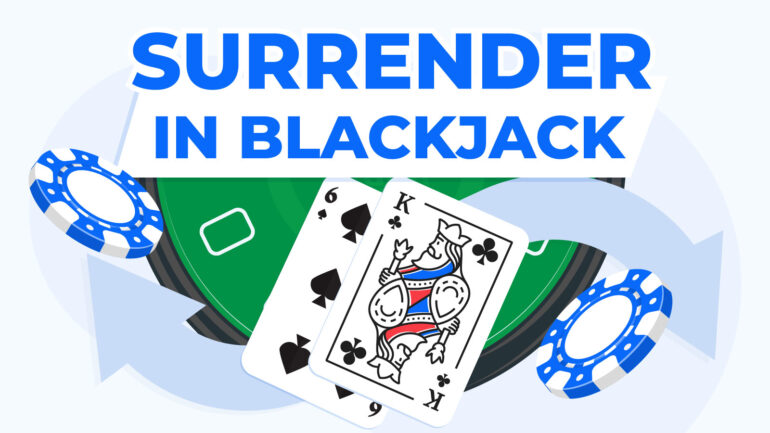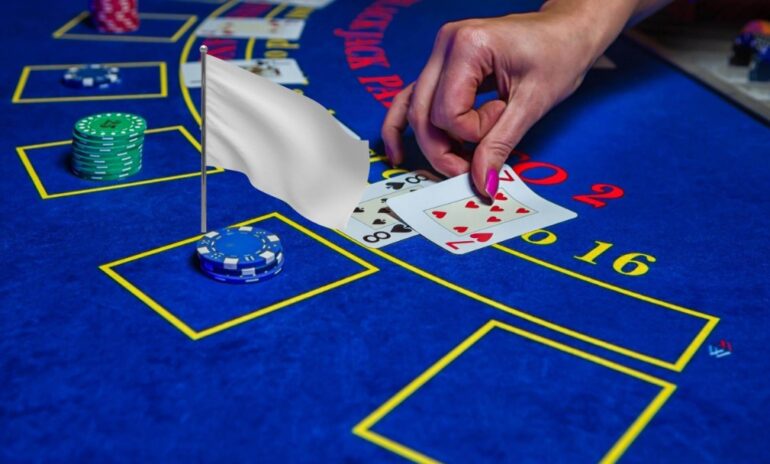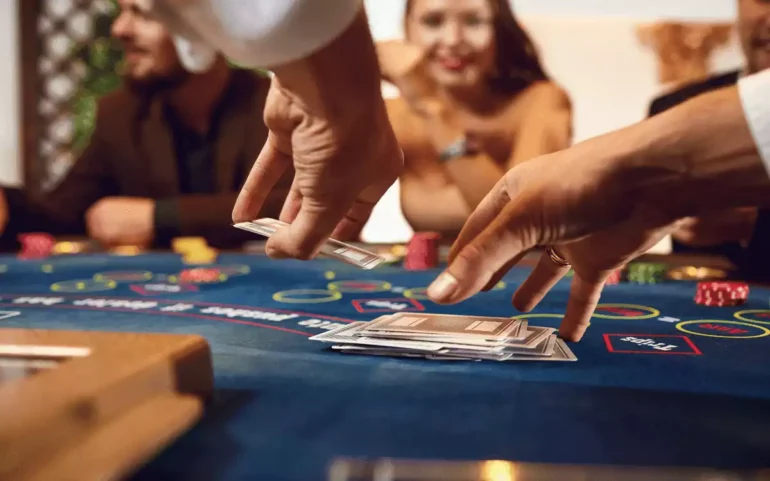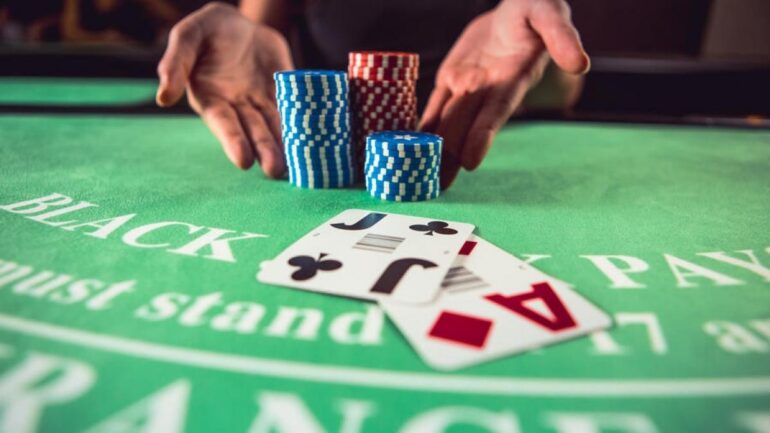
Blackjack, often celebrated as the king of card table games in casinos, offers more than just the thrill of beating the dealer to 21. Among its strategic depth lies the surrender option, a rule not as frequently employed by players as hitting or standing but one that, when used wisely, can significantly reduce the house edge.
This blog post delves into the intricacies of the surrender option in Blackjack, providing a comprehensive guide on how and when to use it to your advantage. Whether you’re a seasoned player or new to the felt, understanding the surrender option can elevate your game and potentially improve your outcomes.
Understanding the Surrender Option
Surrendering in Blackjack is a decision made immediately after the initial deal, before taking any other action on the hand. There are two types available in various casinos: early and late surrender. Early surrender allows you to give up your hand before the dealer checks for Blackjack, while late submission is only available after the dealer checks for Blackjack and finds that they do not have it.
Understanding the distinction between these two can significantly affect your strategy and the house edge.
Employing the option strategically can reduce the house edge, a critical factor for players aiming to maximize their chances of winning. It’s a valuable option in scenarios where your hand has a high probability of losing against the dealer’s up card.
For instance, offering a hand of 16 against a dealer’s 9, 10, or Ace can be a wise move. The option to surrender, however, is not universally offered in all Blackjack games or casinos, making it essential to know the rules of the table before you start playing.
Deciding when to offer requires an understanding of Blackjack odds and probabilities. Generally, offering is advisable in situations where your chances of winning are less than 25%, meaning the dealer has a significantly higher likelihood of winning the hand.
When to Surrender Your Hand

Knowing exactly when to use the option can turn what seems like a concession into a strategic victory. The decision to surrender should be based on the dealer’s up card and the composition of your hand.
Against Strong Dealer Up Cards
When the dealer shows a particularly strong up card (like a 9, 10, or Ace), the chances of the dealer getting a high total are significantly increased. In such scenarios, players holding weak hands (like 15 or 16) might find surrendering to be the best option. The logic behind this move is simple: it’s better to lose half your bet than to proceed with slim chances and potentially lose the entire wager.
With Weak Hands
Certain player hands are notoriously difficult to win with, especially against strong dealer-up cards. A hard 16 (a hand totaling 16 without an Ace counted as 11) against a dealer’s 9, 10, or Ace is a prime example of a surrender-worthy situation. Similarly, a hard 15 against a dealer’s 10 may also merit surrender. These decisions stem from statistical analyses that favor minimizing losses over the long run.
Evaluating Your Position
Ultimately, the decision to offer should be based on a thorough evaluation of your position at the table. This includes not just your current hand and the dealer’s up card but also your overall betting strategy and bankroll management.
Surrendering can be a smart move in preserving your bankroll for future rounds, especially in games where the odds are less favorable. It’s a testament to the adage that sometimes the best offense is a good defense.
Mastering Surrender Strategy

To truly benefit in Blackjack, players must integrate it into a broader strategy of gameplay. It’s not just about knowing when to surrender but understanding how it fits into the overall approach to the game.
Integrating Surrender into Your Strategy
A solid Blackjack strategy encompasses a range of decisions — when to hit, stand, double down, split, and, yes, when to surrender. Mastering when to employ each of these options can drastically improve your chances of winning.
The option is particularly useful in situations where your chances of winning are minimal, and it should be seen as part of a toolkit for minimizing losses over time.
The Psychological Aspect
There’s a psychological component to surrendering that players must manage. Some may view offering as a form of defeat or a lack of aggression. However, seasoned players understand it as a strategic move that acknowledges the realities of probability and odds.
Learning to incorporate it into your strategy with a clear mind and without ego can significantly impact your overall performance and endurance at the table.
Continuous Learning and Adaptation
Blackjack is a game of skill, chance, and strategy. The most successful players are those who continuously learn and adapt their strategies based on the game’s dynamics and their ongoing experiences.
Understanding the nuances of when to renounce is part of this learning process. Engaging with resources, practicing different scenarios, and gaining experience over time is crucial for anyone looking to master the game.
Recognizing Table Rules and Conditions

The distinction between early and late surrender is crucial for strategy. Early surrender, which allows you to forfeit your hand before the dealer checks for Blackjack, offers a significant advantage to the player, reducing the house edge more so than late surrender.
Late surrender, offered after the dealer checks for Blackjack, still provides a strategic benefit, albeit a lesser one. Knowing which type is allowed at your table is essential for making informed decisions.
Conclusion
In conclusion, the surrender option in Blackjack is a powerful tool for players who know how to use it effectively. It’s not simply a way to give up on a hand but a strategic decision that can minimize losses and preserve your bankroll for future rounds.
Whether you’re new to the game or a seasoned player, understanding and integrating the option into your strategy is essential for anyone looking to improve their Blackjack game.
Remember, the best players are not those who win every hand but those who make the most informed decisions under pressure, managing their risks and maximizing their opportunities.
